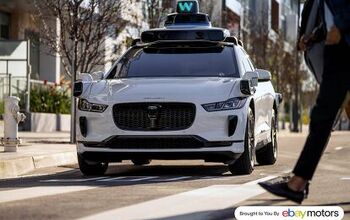Three Lawmakers Want Regulators to Pump the Brakes on Fuel Economy Review

Whoa, slow down a minute. That’s the message from three Republican members of the House Energy and Commerce Committee, which is reviewing fuel economy targets set out for automakers.
The members want more time for car companies to respond to a key report about the 54.5 mile per gallon corporate average fuel economy (CAFE) target, The Detroit Free Press reports.
The midterm review looks at whether the 2025 mileage target is realistic and achievable. Already, the process has yielded a technical assessment report that heaped praise on automakers for installing fuel-saving technology on their vehicles. Three key regulators concluded that the industry will see a light vehicle average of 50 and 52.6 miles per gallon by 2025, if things stay on the current path.
The review process is ongoing, but the regulators (Environmental Protection Agency, National Highway Traffic Safety Administration, and California Air Resources Board) seem to be leaning towards keeping the target in place. A final recommendation won’t come until 2018.
Automakers were given 60 days to respond to the July report. Now, three members want the comment period extended. Chairman Fred Upton (R-St. Joseph), Ed Whitfield (R-Kentucky), and Michael Burgess (R-Texas) are seeking an extra 60 days. Why? The report is too damn long, it appears.
“We assert that the current comment period does not provide the necessary time for an adequate public review,” the members wrote in a letter dated yesterday. “The draft (technical assessment report) exceeds 1,000 pages in length, contains extensive technical information, and references a large number of supporting documents.”
They added that some of the supporting documents weren’t available at the beginning of the public comment period, which runs out on September 26. The regulators responded by saying they’d review the request.
The 2025 target was signed into law in 2012, covering both fuel economy and tailpipe emissions levels. In the draft TAR, regulators were encouraged by the use of turbocharging, gasoline direct injection, electrification and other technologies to raise fleet-wide fuel economy.
Some groups aren’t happy with the 54.5 mpg target. The largest backlash is from the Alliance of Automobile Manufacturers, which claims that fuel-saving technology adds excessive costs to a new vehicle.

More by Steph Willems
Latest Car Reviews
Read moreLatest Product Reviews
Read moreRecent Comments
- Dwford Will we ever actually have autonomous vehicles? Right now we have limited consumer grade systems that require constant human attention, or we have commercial grade systems that still rely on remote operators and teams of chase vehicles. Aside from Tesla's FSD, all these systems work only in certain cities or highway routes. A common problem still remains: the system's ability to see and react correctly to obstacles. Until that is solved, count me out. Yes, I could also react incorrectly, but at least the is me taking my fate into my own hands, instead of me screaming in terror as the autonomous vehicles rams me into a parked semi
- Sayahh I do not know how my car will respond to the trolley problem, but I will be held liable whatever it chooses to do or not do. When technology has reached Star Trek's Data's level of intelligence, I will trust it, so long as it has a moral/ethic/empathy chip/subroutine; I would not trust his brother Lore driving/controlling my car. Until then, I will drive it myself until I no longer can, at which time I will call a friend, a cab or a ride-share service.
- Daniel J Cx-5 lol. It's why we have one. I love hybrids but the engine in the RAV4 is just loud and obnoxious when it fires up.
- Oberkanone CX-5 diesel.
- Oberkanone Autonomous cars are afraid of us.


































Comments
Join the conversation
55 MPG CAFE is STUPID, Slow, lazy way to save fuel. TAX it like Europe does. Washington cowards like to hide behind CAFE s stupid autocratic edicts. A$$hats.
There's always a reason why car companies can't do something. It started with seat belts. Too expensive and nobody will use them anyway. Air bags. You're kidding, they'd cost a fortune. Now you can get a six-pack in the cheapest cars. It never ends. All these bogus claims were never about what was claimed. The manufacturers had their own interests at heart, not yours. So will they kindly explain why my $28,000 GTI doesn't even have a back-up camera. Probably too expensive, right? Soon, no doubt, every vehicle will have one and it will add beans to the cost.